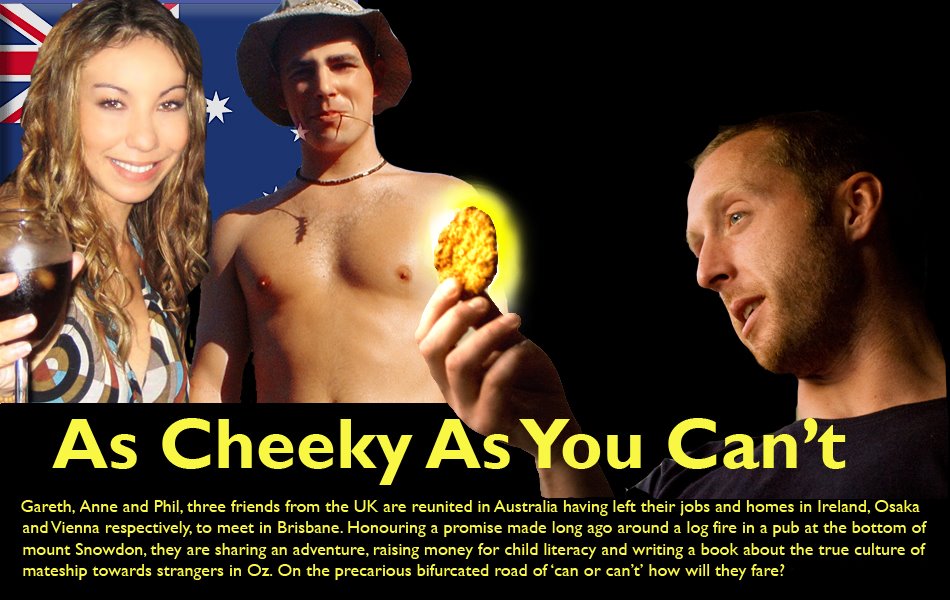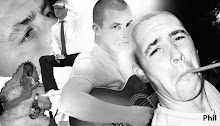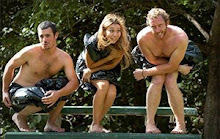What can we say about Wycliffe Well? We can offer some demographic facts: it is located 130 kilometres south of our next major stop at Tennant Creek and 380 kilometres north of our previous destination of Alice Springs. Or maybe an historical fact: that it began life as a watering point along the route for the Overland Telegraph Line in the 1860s, after being discovered by the explorer John McDouall Stuart on his famous expeditions to reach the Top End in the late 1850s.
Flowering trees at Tennant Creek
Or we can offer the spurious and conjectured rumours that it is a hotbed of alien activity, and visited by more creatures from another dimension than you'd encounter at an Elton John concert. The Wycliffe Well Roadhouse where we stopped at to get fuel held claim to some long-time extraterrestrial association and so had a strong UFO theme with murals, spaceship models and smiling alien creatures there to greet us at the bowser, after the owners donated to us some fuel.
Sneaking a peek around the back at the camping ground we saw there larger than life effigies of Elvis, the Phantom and the Incredible Hulk. A man polished the head and touched up the paint-job on a lime-green alien with meticulous attention to detail in the small theme park at the front.
And we wondered; are people living and working in these remote places because of any specific motivation, or just because they found themselves there. Maybe they were tempted by the freedom involved in being able to walk around during the day out-and-about in nothing but their underwear and a pair of cowboy boots, and not only did no one care, or mind, but actively encouraged such behaviour and took photos of them to post of Facebook. The alien theme thing, well, it stands out, and in the monotony of sameness and the dirge of amusement that is driving through the desert, they at least offer some diversion.
But is it enough of a reason to stop somewhere and but a coffee and some food, maybe a car sticker and a novelty naked stubby-holder just because something that may or may not have happened is rumoured to have occured nearby? Or, looking at it another way, is it enough of a reason to make you curious enough to linger there for five minutes longer to know that the people who live there and who run this place advertize themselves as a weird conglomerate offering the commodity of oddness? The answer to both I think we all know, is yes.
How can you not pause to take a second look as a man carefully, dilligently and so thoroughly polishes the head of his six-foot, skinny-armed protruberant-headed, large silver-eyed, lime-green coloured model of an alien, smack bang in the middle of the desert? How can you fail to entertained by the absolute randomness of it all? An alien themed playground and mini-theme park! How can you not be a little enthralled by the news that you are travelling through an incredibly active area for sighting UFOs, as you look around you and the tumbleweed blows towards the expanding and shimmering horizon?
Ultimately, though, no one cares all that much. A polite nod, and a raised eyebrow is all that is required. You know, sometimes, you can know too much, and while we realized that, yes, maybe the truth is out there, it could stay there, and we just enjoyed it for the oddity it is meant to be, and left it at that. The aliens at Wycliffe Well Roadhouse; what a strange idea.
Wycliffe Well, more than just a place to refuel
Driving off, enlivened by our first encounter of the nerd kind, we made it to Tennant Creek early evening and were given fuel by the BP station there and some food, groceries and such, by the Food Barn, and bedded down for the night at Tennant Creek Caravan Park.
It is an interesting little place. Found initially by the explorer John McDouall Stuart who camped at the nearby watercourse on his expedition to the Top End in the 1860s, and he named it after one of his sponsors, a man called John Tennant. It was later to by used by the Overhead Telegraph Line in the 1870s as a Repeater Station.
A tree at Tennant Creek Caravan Park
It remained relatively isolated until the 1930s, when Australia's last Great Goldrush brought men from all over hoping to make their fortunes, and legend has it that in 1934 a man named Joe Kilgariff built his stores where his beer wagon became bogged, and the town simply grew around it.
It is the ancestral home of the Warumungu people who have lived here for over 40,000 years and are the area’s traditional custodians. The Warumungu people’s legend says that Tennant Creek grew up around the home a powerful ancestral being - a spiky tailed goanna called Nyinkka.
Mick the local servo owner is happy to give us donations for work
It was hot the next day, the kind of heat that begins to boil you from the inside, that scorches the perspiration from your face before it forms. We managed to talk the owner of another servo, the Central Service Station, into giving us a couple of hours work, in exchange for some fuel, and Mick, the owner, was only too pleased.
We worked at an annexed games room, and we cleaned some railings ready for repainting, and stripped paint from doorways too, dealing with deadly redback spiders as we went, and listening to Guns n' Roses on repeat. Mick then filled us up, and donated a healthy sum to Book Aid too.
Tennant Creek Caravan park donated use of their facilities
We cleaned up and ate at the Caravan Park making preperations for the long drive up to Darwin, and the imminent prospect of Christmas was prepared for with the voting to save as emergency rations a fancy tin of Champignon mushrooms and some chick peas, although we hoped, we really hoped, we would have some beans to go with them.
Anne finds her feet covered in the paint chips she strips from the walls
Anne finds a highly poisonous redback spider on her thumb whilst cleaning under the window frames, luckily it didn't bite her
Phil climbs a ladder to wash down the walls in an arcade games room
We get a donation of fuel Read a cheeky bit more!




















